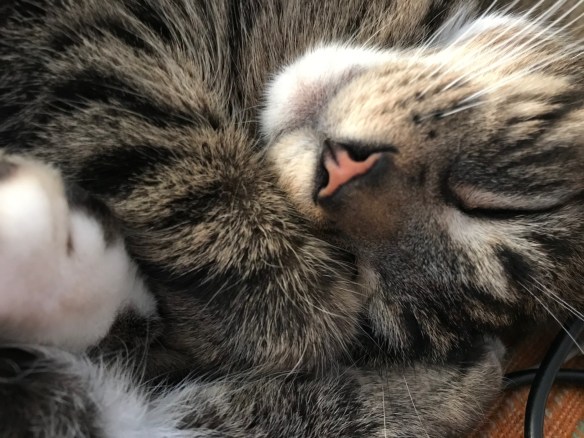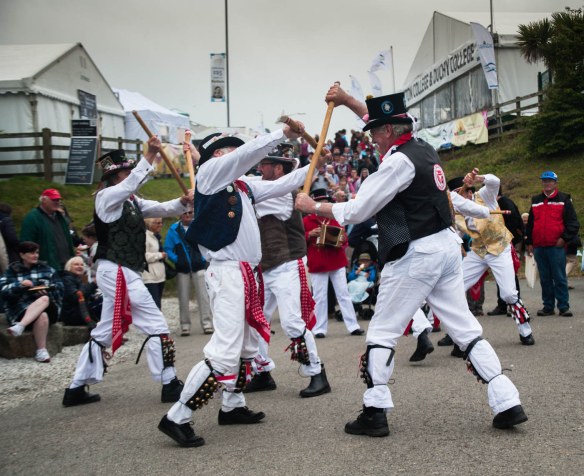Well, on its wanted poster, it’s called BA.2, so let’s call it that. We don’t know what it calls itself. It’s estimated to be 1½ times as infectious as its relative BA.1.
What kind of relatives are they? They’re being called sister viruses, since .2 isn’t a descendant of .1, although why it’s a sister instead of a brother I don’t know. Viruses never allow themselves to be shoved into little pink or blue baby suits.
Never mind. If they want to be sisters, they can be sisters. Kids, you can be anything you want to be.
Within limits. We’ll discuss the fine print when you’re older.
Let’s set that aside, okay? We’ve got some good news for a change: BA.2 doesn’t seem to be any more dangerous as BA.1, and the vaccines seem to be as effective against .2 as they are against BA.1.

Irrelevant photo: The first celandine are out. They’re looking a little bruised, as if they’ve gone nine rounds with King Winter, which they have, but they’re in bloom.
End of good news. Dr. Gregory Poland, of the Mayo Clinic’s Vaccine Research Group, said that variants will “continue to happen and infect every unvaccinated person until people are vaccinated and until they’re wearing a mask. You can choose to ignore these facts―these clear data―but the virus could care less what we think. The virus is going to find people who do not have protective immunity and infect them.”
That should be “couldn’t care less,” but you know what he means.
So what should we be doing?
According to WHO Director-General Tedros Adhanom Ghebreyeus, “We are concerned that a narrative has taken hold in some countries that because of vaccines—and because of omicron’s high transmissibility and lower severity—preventing transmission is no longer possible and no longer necessary. Nothing could be further from the truth. It’s premature for any country either to surrender or to declare victory. This virus is dangerous and it continues to evolve before our very eyes.”
That quote’s a few weeks old, but we’re not listening. Many countries are undoing their Covid restrictions because, hey, they know better. And it’s over.
Meanwhile, Covid’s overwhelming Hong Kong and desperate hospitals were setting up beds outside.
How much of Hong Kong’s population’s vaccinated? The closest I could come to an answer is this: If you compare the number of doses delivered to the population, 78.9% of the people could have had two doses.
Vaccine news
Scientists at the Wistar Institute are working on a vaccine that, at least in animal studies, creates a stronger, broader, and more durable protection than the current vaccines, and does it with a single, low dose that can be stored at room temperature. If that’s not enough, it can also be adjusted quickly as new variants arise.
And it makes a decent cup of tea if you ask politely.
It uses three technologies: immune focusing, self-assembling nanoparticles, and DNA delivery. Now let’s see if I can explain what those are.
Well, no, I can’t quite, but I can throw some language at you to make it sound like I understand a bit of this.
The vaccine shoots you some naturally self-assembling proteins (whatever they may be), and they then form nanoparticles that arrange themselves–oh, hell, I’m lost, so I’ll quote: “By arranging themselves into structures that resemble an actual virus, the nanoparticles are more easily recognized by the immune system and transported to the germinal centers, where they activate B cells which produce protective antibodies.”
To translate that, they use long words to activate your immune system, creating “stronger levels of protective, neutralizing antibodies.”
If I understand this correctly, all this convinces the body to produce things that would normally be produced in high-tech factories.
They’re at the animal-test stage, and so far it’s producing a stronger, longer-lasting immune response than the existing vaccines. With that data in their pockets, they’re scrambling around, trying to raise the money for human trials.
*
Another set of trials is using a nasal spray to deliver a booster vaccine, focusing the immune system on the areas Covid attacks first, the nose and lungs. It depends on the recipient having already had an mRNA vaccine or possibly a previous infection.
The idea, since this focuses the protection on the nose and lungs, that it would prevent both infection and transmission.
They’ve run tests on mice and will test the approach on larger animals, then hope to start human trials.
*
Researchers at the Massachusetts Institute of Technology have worked out a way to inject RNA and DNA into the stomach lining by way of a capsule the size of a blueberry, allowing it to reach the digestive tract directly.
Other than driving anti-vaxxers nuts, what’s the purpose? It would let you–or, ideally, someone who knows what they’re doing if you’re no more skilled at this than I am–deliver medicine for gastrointestinal problems directly to the gastrointestinal work site. It might (or might not–it hasn’t been fully tested yet) also let you deliver an RNA vaccine in a new and interesting way, one that would be easy on needlephobes and wouldn’t make small children scream, although that last possibility depends on someone getting them to swallow the blueberry.
And, of course, it would drive the anti-vaxxers nuts.
Do masks work?
A California study reports that wearing an N95 mask or its equivalent reduces the chances of becoming infected with Covid. In Europe, the N95 is called an FFP2; both are also called KN95 masks or just plain ol’ respirators.
These aren’t the blue disposable masks that blow around the parking lots of this and many other fair lands. They’re also not your average cloth masks. They’re the more expensive ones made of I have no idea what but designed not just to keep you-the-wearer from sharing your germs but also to protect you-the-wearer from stealing other people’s.
That’s other people’s germs, not their masks, and that’s a huge and important difference. As mask mandates are reduced and as some people insist on their right to breathe in other people’s faces, they become a form of self-defense.
Some N95s are disposable. Others are reusable–up to a point, estimated at about 40 hours of use.
The study involved 3,000 Californians, and it’s a less than perfect study. For one thing, it relies on what people say they’ve done, with no reality check built in. That’s always dicey. You know what humans are like. It was also limited to people who chose to get tested for Covid. Still, it might give us a hint or two about what’s happening out there.
So with all that out of the way, would I please tell you what the damn thing said?
Why yes, I’d be glad to:
People who said they always wore masks (any kind of masks) in public indoor settings were 56% less likely to test positive for Covid than people who didn’t wear masks. That went up to 83% for people who wore N95 masks. People who wore surgical masks were 66 percent less likely to test positive.
A more controlled study, published in the Proceedings of the National Academy of Sciences, tested the rate of transmission when an infected person talked for an hour to an uninfected person. When the person who wasn’t infected wore a well-fitting mask N95 or its European equivalent, the FFP2 mask, the risk of infection was 20 percent.
If both people wore surgical masks, the risk of infection went up to just under 30 percent. When both N95 masks or their equivalent, though, it dropped to 0.4 percent.
The two studies reported their findings differently, so we can’t compare the results–or I can’t anyway–but the second one does tell us that two people wearing good masks present less of a risk than one person doing the same.
Should we do the howevers now?
To work most effectively, the N95 mask has to be fit tested, which is something they do at hospitals and in hazardous workplaces. It’s complicated enough that no one does it at home. Or in the supermarket, or on the bus. Most people who put them on without fit testing them don’t get a complete seal between the mask and their face, even if it feels like a good fit.
So they’re less than perfect protection, but even if they’re not fit tested they’re still decent.
How decent? Sorry, I sank, but you’re welcome to dig around in here and figure it out yourself. I warn you, it involves numbers. Also words. Don’t say you weren’t warned. In layperson’s terms, I think the answer would be not enough to make someone with a compromised immune system safe but more decent than a cloth or disposable mask.
I haven’t looked into how the second study was set up, but I did wonder. Did they actually use an infected person, putting the uninfected person at risk? Dunno. How many of the people being talked at expired from sheer desperation before the hour was up? Dunno that either. I’m sure it depended on the talker. With some people I’ve known, I wilt after fifteen minutes of listening.









